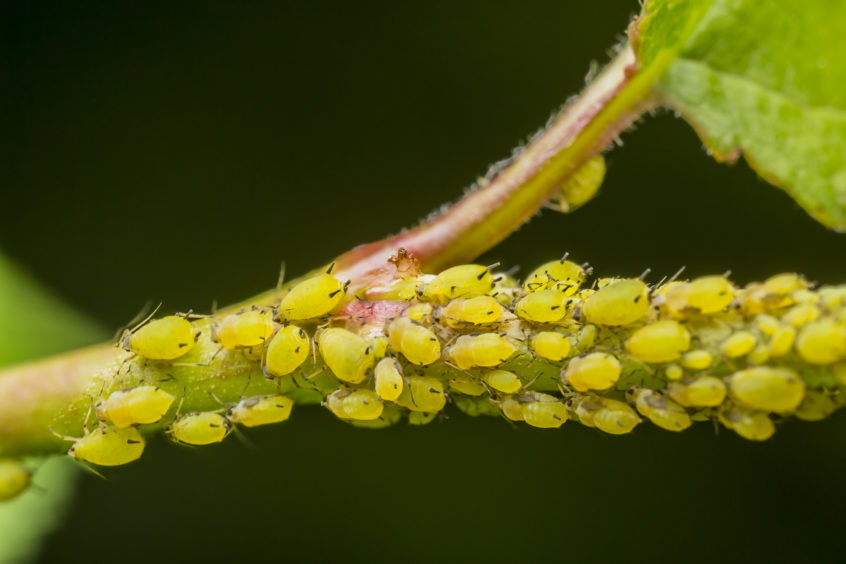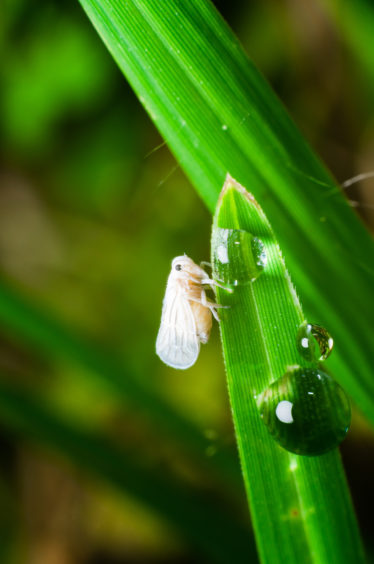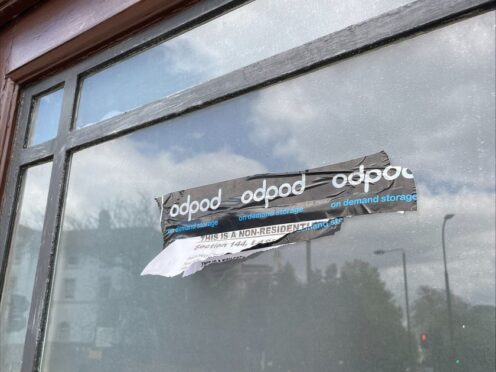It’s summertime, and while we enjoy the warm weather it’s time to keep an eye out for pests and disease in our garden, Brian Cunningham writes.
We’re as good as midway through the growing season now and it’s usually about this time we begin to notice an assault on our plants. It’s all been good fun up until now but I have to tell you, it’s pest and disease time!
I’ve been gardening for a few years now and this still fills me with a degree of fear and dread, but with a little extra vigilance and trust of your instincts when something doesn’t feel quite right, then potential disaster and the destruction of our much-anticipated fruit and vegetable crops can be avoided.
Pest is defined in the dictionary “as a destructive insect or other animal that attacks crops, food etc”. A bunch of blooming nuisances and top of the list for me is the pigeon, which seems to be able to sniff out a freshly planted brassica crop from miles around. Cabbages, kale, sprouts, turnip tops and peas, too – if you see plants with leaves pecked away, with only the main leaf veins left, this will have been your culprit. I’m sure it was them who took my sweet corn last year as well.
I always like to experiment, so I did try one of those fake birds of prey that sit on top of a pole as a supposed scare tactic, but I knew it was a waste of time when I opened the kitchen garden gate and watched the disturbed pigeon fly off from where it sat, on top of the thing supposed to scare it away. The only sure way to protect your crops from this pest is in the form of a barrier, usually a netting or horticultural fleece.
This will also protect your brassicas from the cabbage white butterfly, stopping them laying their eggs on the foliage which the resulting caterpillars will devour, ruining your crop.
Another veg that benefits from horticultural fleece is the carrot; it will protect your crop from the carrot root fly. If you have been affected by this pest, above ground the foliage, instead of being a lovely green, will eventually turn to yellow, but the clear evidence is, when dug up and the carrot is cut open, tunnels are revealed, often housing the cream-coloured maggots.
With all chemicals once used to treat this root fly thankfully now banned, the only way to defend your carrots from attack is to fight back with an effective remedy – or a combination of approaches. Carrot root flies stay low to the ground laying eggs in the soil, so cover the area completely with the fleece or use it to make a barrier around your carrot crop about 3ft or 90cm high. If the fortifications are this high then those using raised beds to grow veg should not need the barrier.
The way we grow our carrots helps – sowing sparingly reduces the need to thin the crop, which is a shame as you can’t beat the flavour of baby carrots, and if you need to thin them, do so in the evening of a still day so the flies aren’t alerted to scent of the foliage being brushed. Simpler still, just sow a variety of carrot that is resistant to this pest.
In the glasshouse, whitefly is next on the list. My first introduction to it was seeing fuschia plants infested by these little sap-feeding blighters that seemed to shoot up in the air after being disturbed from their hiding place underneath the leaves while I was trying to water. They thrive in the warm conditions of the glasshouse and are also fond of my chilli pepper plants and sometimes cucumbers, too.
One of the first things I was taught when growing plants under glass was the importance of ventilation. Open the doors and vents once the temperature is up, allowing fresh air to circulate and help keep your glasshouse or polytunnel cooler. Avoid cramming your benches too full of plants, giving sufficient space between them to allowing air to flow, helping to chase any pests and disease away. Hanging yellow, sticky fly traps over the tops of plants will trap whitefly (though be careful when working among your plants, as I’ve heard it’s a nightmare when this gets stuck in your hair).
And releasing another insect as biological control is another great natural way to control whitefly.
I like using other plants as a pest control in a method known as companion planting. Strong-smelling plants such as pots of marigolds among your glasshouse plants can be enough to confuse pests and give some protection.
This can also be effective out in the kitchen garden where strong-smelling leeks, chives and onions, if grown next to carrots, can be a useful defence against the carrot fly.
Nasturtiums not only add colour in this area, but when grown next to broad and runner beans will attract aphids such as black fly to it, and away from the beans. I like to grow lots of nasturtium in the kitchen garden at Scone Palace, but that’s really because I love eating the peppery leaves that give a kick to my salads.
Brian Cunningham is a presenter on the BBC’s Beechgrove Garden and head gardener at Scone Palace. Follow him on Twitter @gingergairdner












